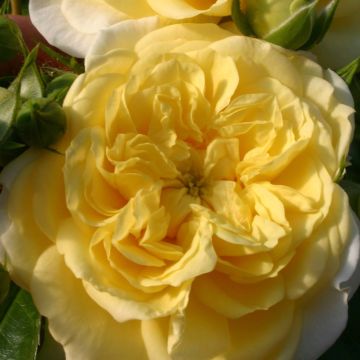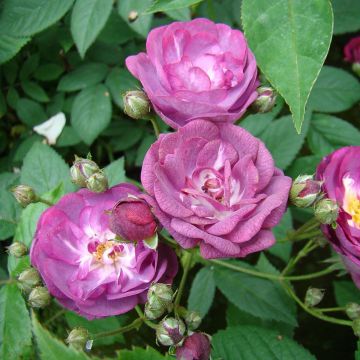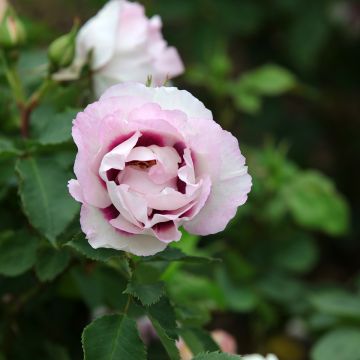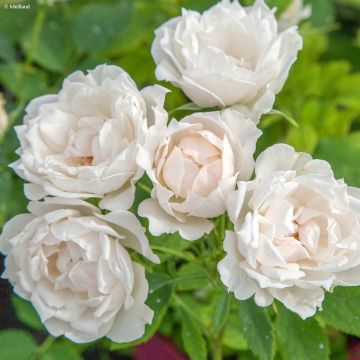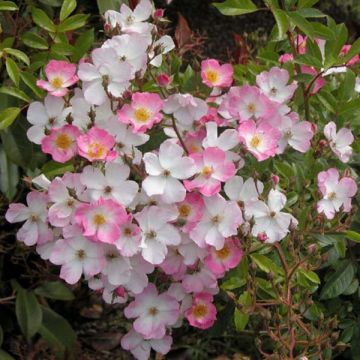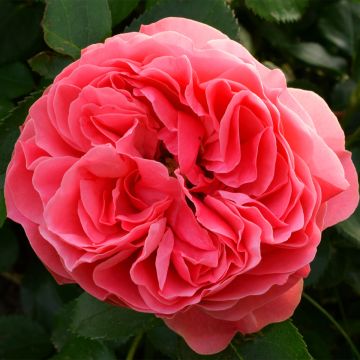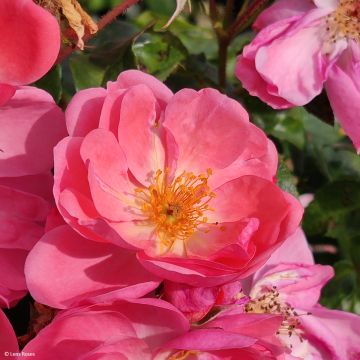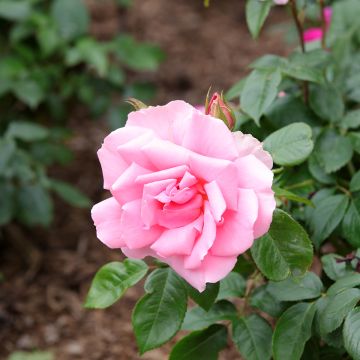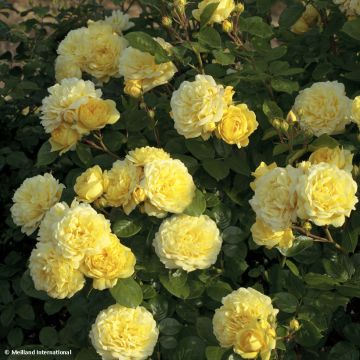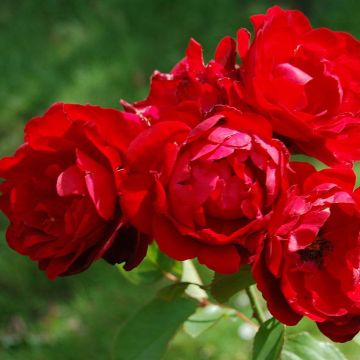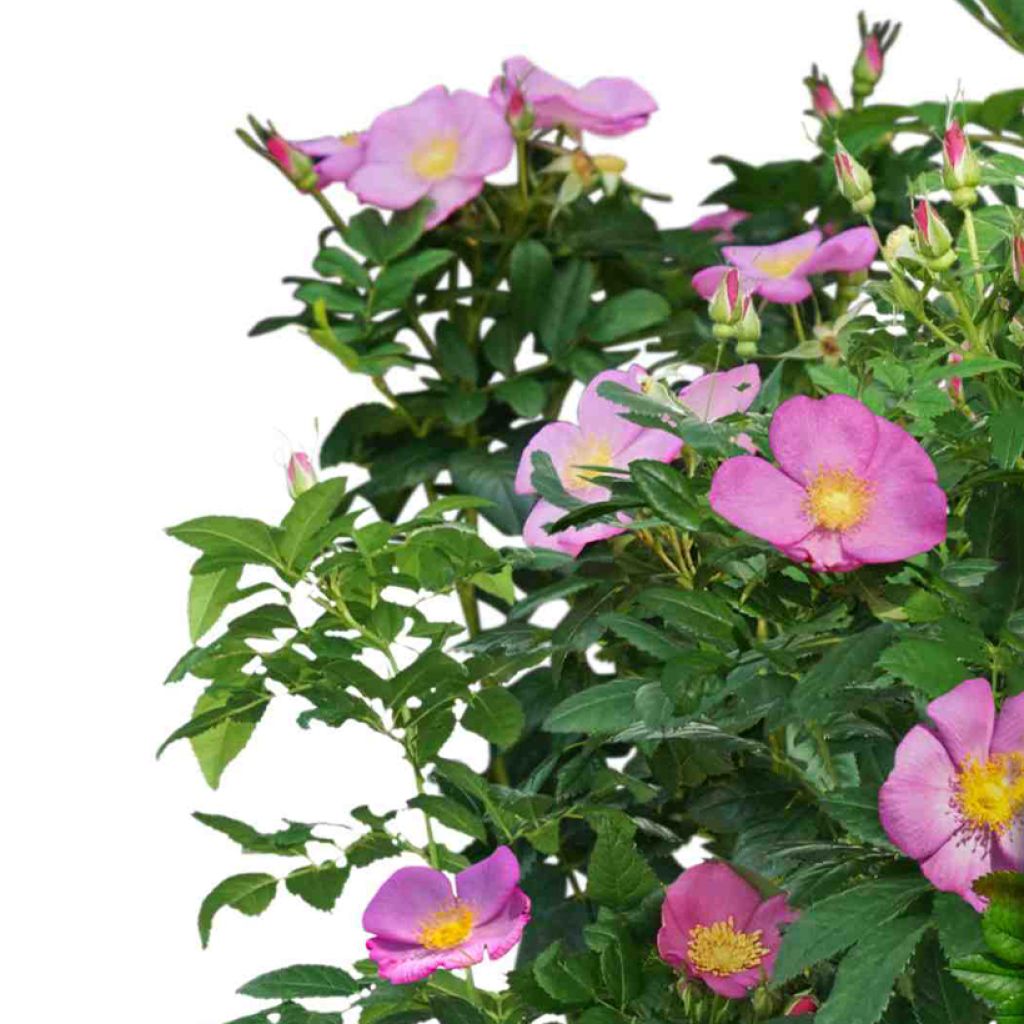

Rosa Rosy Boom Wildlife
Rosa Rosy Boom Wildlife
Rosa Rosy Boom® Wildlife
Rose
This item cannot be shipped to the selected country
Delivery charge from €5.90
More information
Schedule delivery date,
and select date in basket
This plant carries a 24 months recovery warranty
More information
We guarantee the quality of our plants for a full growing cycle, and will replace at our expense any plant that fails to recover under normal climatic and planting conditions.
From €5.90 for pickup delivery and €6.90 for home delivery
Express home delivery from €8.90.
Does this plant fit my garden?
Set up your Plantfit profile →
Description
The Rosy Boom 'Wildlife' Shrub Rose is a bush rose that is easy to grow and low-maintenance. It is derived from the Rosa rugosa wild rose, and its simple flowers are pink with yellow stamens, reflecting its natural heritage. It also produces an abundance of edible rose hips at the end of the season. This unpretentious rose pleases pollinators and can be grown in ordinary sandy soil rich in nutrients. This hardy, healthy, and compact selection can be pruned once a year. It forms a close, almost spherical bush that can be planted in flower beds, small hedges, or pots, allowing you to enjoy its pink flowers all summer before enjoying its bright red fruits in autumn.
The Rosy Boom Wildlife Shrub Rose has a rounded bushy habit and reaches an average height of 80 cm (32in) to 1 m (3ft) with a width of 40 to 50 cm (16 to 20in) at maturity, making it suitable for small spaces. Its flowering is particularly abundant and regular from June to September. Its small 4 cm (2in) wide roses are gathered in generous panicles. They are slightly flattened cups, a pretty bright pink with yellow stamens. The stems are adorned with deciduous foliage, cut into leaflets of medium green with a satin finish. The bush produces an abundance of edible rose hips at the end of the season, which form if you have taken care to leave a last flower uncut on the bush. Known for their high vitamin C content, five times higher than lemons, these fruits can be consumed infused, crushed, dried, or made into jelly. They are also an important food source for birds.
Landscape roses can be used to create beautiful small hedges, planted mixed along the edge of a terrace or in small shrub beds. Combine them with abelias, nandinas, deciduous ceanothuses, roses or blue ones, or caryopteris. They are good companions for peonies, paniculate phlox, and tall baby's breath. The modest size of Rosy Boom 'Wildlife' allows it to fit into any garden, even small ones. It can be used in various ways, according to each gardener's preferences: in a rose bed, alongside pink, red, or purple varieties, such as Rhapsody in Blue, or mixed with easy-care plants like perennial geraniums Rozanne, small-flowered carnations, perennial salvias, or pink and blue asters.
Report an error about the product description
Plant habit
Flowering
Foliage
Botanical data
Rosa
Rosy Boom® Wildlife
Rosaceae
Rose
Cultivar or hybrid
Other Polyantha clustered Roses
Planting and care
The Rose Rosy Boom 'Wildlife' is undemanding; it thrives in all regions that are not too hot and are not affected by diseases, cold, rain, or poor and occasionally dry soils. It adapts to any type of soil, even sandy soil. Plant it in well-worked and well-drained ordinary soil and in a sunny or partially shaded position, which it tolerates very well. Perfectly hardy, this rose can withstand temperatures as low as -20°C.
To plant your rose in a pot or open ground, prepare the soil to a depth of 25 cm (10in) by breaking up the soil and adding a base amendment such as blood, fish and bone at the bottom of the planting hole. Position your plant, remove it from its pot, and cover the top of the root ball with 3 cm (1in) of soil. Fill in the hole and water thoroughly to eliminate air pockets. Regular watering for a few weeks is necessary in dry weather to facilitate root establishment. Also, remember to provide your rose with a special rose fertiliser to stimulate flowering.
Regularly remove faded flowers throughout the season. To maintain a well-branched habit, maintenance is simple: after winter, remove the oldest branches (2-3 years old).
Roses are often marked or unsightly towards the end of summer, but this is not a problem for their development. These spots are not harmful to the rose, it is a natural phenomenon.
Planting period
Intended location
Care
This item has not been reviewed yet - be the first to leave a review about it.
Haven't found what you were looking for?
Hardiness is the lowest winter temperature a plant can endure without suffering serious damage or even dying. However, hardiness is affected by location (a sheltered area, such as a patio), protection (winter cover) and soil type (hardiness is improved by well-drained soil).

Photo Sharing Terms & Conditions
In order to encourage gardeners to interact and share their experiences, Promesse de fleurs offers various media enabling content to be uploaded onto its Site - in particular via the ‘Photo sharing’ module.
The User agrees to refrain from:
- Posting any content that is illegal, prejudicial, insulting, racist, inciteful to hatred, revisionist, contrary to public decency, that infringes on privacy or on the privacy rights of third parties, in particular the publicity rights of persons and goods, intellectual property rights, or the right to privacy.
- Submitting content on behalf of a third party;
- Impersonate the identity of a third party and/or publish any personal information about a third party;
In general, the User undertakes to refrain from any unethical behaviour.
All Content (in particular text, comments, files, images, photos, videos, creative works, etc.), which may be subject to property or intellectual property rights, image or other private rights, shall remain the property of the User, subject to the limited rights granted by the terms of the licence granted by Promesse de fleurs as stated below. Users are at liberty to publish or not to publish such Content on the Site, notably via the ‘Photo Sharing’ facility, and accept that this Content shall be made public and freely accessible, notably on the Internet.
Users further acknowledge, undertake to have ,and guarantee that they hold all necessary rights and permissions to publish such material on the Site, in particular with regard to the legislation in force pertaining to any privacy, property, intellectual property, image, or contractual rights, or rights of any other nature. By publishing such Content on the Site, Users acknowledge accepting full liability as publishers of the Content within the meaning of the law, and grant Promesse de fleurs, free of charge, an inclusive, worldwide licence for the said Content for the entire duration of its publication, including all reproduction, representation, up/downloading, displaying, performing, transmission, and storage rights.
Users also grant permission for their name to be linked to the Content and accept that this link may not always be made available.
By engaging in posting material, Users consent to their Content becoming automatically accessible on the Internet, in particular on other sites and/or blogs and/or web pages of the Promesse de fleurs site, including in particular social pages and the Promesse de fleurs catalogue.
Users may secure the removal of entrusted content free of charge by issuing a simple request via our contact form.
The flowering period indicated on our website applies to countries and regions located in USDA zone 8 (France, the United Kingdom, Ireland, the Netherlands, etc.)
It will vary according to where you live:
- In zones 9 to 10 (Italy, Spain, Greece, etc.), flowering will occur about 2 to 4 weeks earlier.
- In zones 6 to 7 (Germany, Poland, Slovenia, and lower mountainous regions), flowering will be delayed by 2 to 3 weeks.
- In zone 5 (Central Europe, Scandinavia), blooming will be delayed by 3 to 5 weeks.
In temperate climates, pruning of spring-flowering shrubs (forsythia, spireas, etc.) should be done just after flowering.
Pruning of summer-flowering shrubs (Indian Lilac, Perovskia, etc.) can be done in winter or spring.
In cold regions as well as with frost-sensitive plants, avoid pruning too early when severe frosts may still occur.
The planting period indicated on our website applies to countries and regions located in USDA zone 8 (France, United Kingdom, Ireland, Netherlands).
It will vary according to where you live:
- In Mediterranean zones (Marseille, Madrid, Milan, etc.), autumn and winter are the best planting periods.
- In continental zones (Strasbourg, Munich, Vienna, etc.), delay planting by 2 to 3 weeks in spring and bring it forward by 2 to 4 weeks in autumn.
- In mountainous regions (the Alps, Pyrenees, Carpathians, etc.), it is best to plant in late spring (May-June) or late summer (August-September).
The harvesting period indicated on our website applies to countries and regions in USDA zone 8 (France, England, Ireland, the Netherlands).
In colder areas (Scandinavia, Poland, Austria...) fruit and vegetable harvests are likely to be delayed by 3-4 weeks.
In warmer areas (Italy, Spain, Greece, etc.), harvesting will probably take place earlier, depending on weather conditions.
The sowing periods indicated on our website apply to countries and regions within USDA Zone 8 (France, UK, Ireland, Netherlands).
In colder areas (Scandinavia, Poland, Austria...), delay any outdoor sowing by 3-4 weeks, or sow under glass.
In warmer climes (Italy, Spain, Greece, etc.), bring outdoor sowing forward by a few weeks.

































